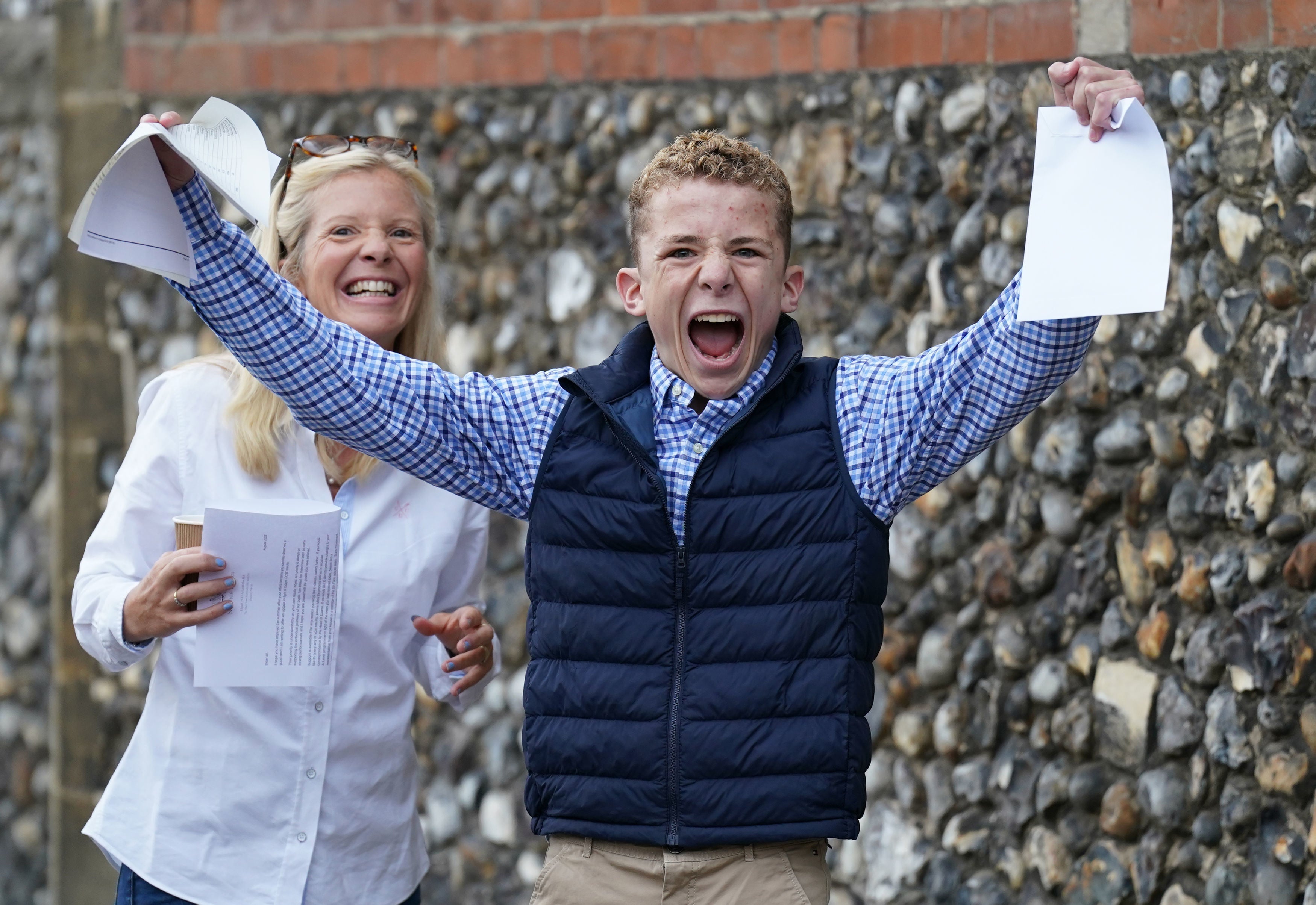GCSE grades fall from Covid record high in crackdown on grade inflation
Both pass rate and percentage of top grade drops
Your support helps us to tell the story
This election is still a dead heat, according to most polls. In a fight with such wafer-thin margins, we need reporters on the ground talking to the people Trump and Harris are courting. Your support allows us to keep sending journalists to the story.
The Independent is trusted by 27 million Americans from across the entire political spectrum every month. Unlike many other quality news outlets, we choose not to lock you out of our reporting and analysis with paywalls. But quality journalism must still be paid for.
Help us keep bring these critical stories to light. Your support makes all the difference.
GCSE grades have fallen from an all-time high during the Covid pandemic as efforts to curb grade inflation kicked into force.
Hundreds of thousands of students in England, Wales and Northern Ireland picked up their results on Thursday in the first year of exams since the Covid pandemic hit.
Both the overall pass rate and proportion of top grades have dropped this year, according to official figures.
Around 73 per cent of GCSE entries received a 4/C, which is considered a pass. This was down from a record 77 per cent last year, when grades were awarded by teachers instead.
Meanwhile, 26.3 per cent of GCSEs were given the top grades of 7/A or above this year compared to 28.9 per cent - another all-time high - in 2021.
This was expected as part of staggered efforts to crack down on grade inflation.
Marks were still higher than before the Covid pandemic - when the pass rate was 67.3 per cent and top grades stood at 20.8 per cent - in recognition of the disruption experienced.
Will Quince, an education minister, said it was “very much part of the plan” for GCSE grades this year to be lower than 2020 and 2021 on the morning of results day.

Geoff Barton from the Association of School and College Leaders congratulated students who received their GCSE today, as well as those receiving vocational and technical qualifications.
“They deserve great credit for all they have achieved in the most difficult circumstances imaginable – a global pandemic which has caused wave after wave of disruption to the education system over the past two years,” he said.
The union leader said the fact grades were “generally lower” compared to last year “has nothing to do with the performance of pupils” but instead the decision of government and regulator Ofqual to crack down on grade inflation.

Girls continued their lead over boys this year, with 30.0 per cent of entries achieving a 7/A, compared with 22.6 per cent for males.
The gap has closed slightly from last year when 33.4 per cent of female entries were awarded 7/A or above compared with 24.4 per cent for males.
London came out top in England, with around 32 per cent of grades in the capital awarded the highest marks, compared to 22 per cent in other regions - including Yorkshire and the North East. The pass rate in London was also 76.7 per cent, while this dropped below 70 per cent in other parts of the country.

Northern Ireland got the best marks in the UK, with the proportion of top marks at 37 per cent and pass rate at 90 per cent.
The exam regulator for England said 2,193 pupils aged 16 got grade 9 in all their subjects - including 13 students who did at least 12 GCSEs.
While traditional A*-G grades are used in Northern Ireland and Wales, in England these have been replaced in with a 9-1 system, where nine is the highest. A 4 is broadly equivalent to a C grade, and a 7 is broadly equivalent to an A.
Kath Thomas, the interim chief executive officer at the Joint Council for Qualifications, said: “This is the first time in three years that results have been based on formal exams and coursework, so it’s a welcome step back towards normality.”
James Cleverly, the education secretary, said: “Students receiving their results today should be extremely proud, and I want to congratulate them all. The teaching profession has worked incredibly hard and these results are a testament to the resilience of both our students and staff.”
Additional reporting by Press Association
Subscribe to Independent Premium to bookmark this article
Want to bookmark your favourite articles and stories to read or reference later? Start your Independent Premium subscription today.




Join our commenting forum
Join thought-provoking conversations, follow other Independent readers and see their replies
Comments